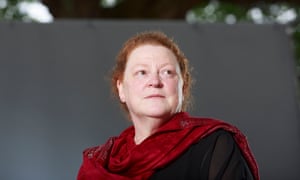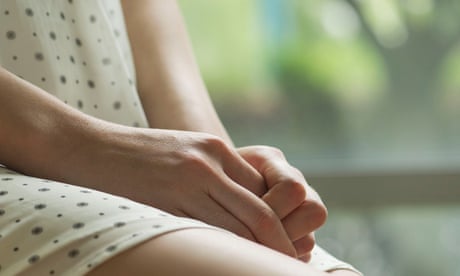A leading forensic anthropologist on the unique hand-recognition database she set up following a failed conviction

It was a failure that still haunts Dame Sue Black, a leading forensic anthropologist, that drove her to develop a hand-recognition technique that identifies child sexual abusers.
Better known for identifying human remains in the aftermath of wars and natural disasters, Black turned her attention from the dead to the living after she was unable to secure the conviction of a father whose daughter had accused him of abuse.
Black’s steady-eyed gaze falters momentarily as she recounts the story of being contacted for help by the police because of her worldwide reputation for anatomical variation. Her analysis of the footage – which the girl gave to police to use as evidence against her father – showed distinctive forearm vein patterns matching those of the alleged abuser. Yet the jury found him not guilty. According to a barrister, says Black, it was not that the jury disbelieved the evidence she had shown them, but they did not believe the girl because she had not cried enough.

Rape and sexual abuse services in England and Wales get £24m boost
Read more
The outcome deeply affected Black. “I took it very personally as a failure. That brave, brave girl will have been released back into the family home with a dad who [she says abused her, yet] has been found not guilty of abuse. God knows what will have happened to her, but she probably ran away and ended up on the street and on drugs – if she is even still alive.”
As a result, Black created a system that uses unique vein patterns, skin folds and blemishes to identify the hands and forearms of child abusers from photographs and video images. To date, it has been used to secure 28 life sentences against child abusers in the UK. And in 83% of the cases that have used her system the abuser has confessed to the crime.
Now the European Research Council has put up €2.5m (£2.1m) for Black to set up H-unique – the world’s first searchable database of the anatomy and variation of the human hand, based on her groundbreaking work. It will train machines to analyse thousands of images of hands and then computer algorithms will speed up the process of matching people. Black has said that one day the database could be as valuable as fingerprinting.
The hand-recognition project is being led by Black at Lancaster University in collaboration with the University of Dundee, where she was previously head of the department of anatomy and forensic anthropology.
Black’s ability to engage with ordinary people is gained from leading teams for the UK government and the United Nations to identify victims and perpetrators of various conflicts. It is those communication skills that secured her latest role as Lancaster’s pro vice-chancellor for engagement to improve communication between the university and its staff and students, with its region and the UK.
Her interest in anatomy started while still at primary schoolin Lochcarron, in western Scotland, when she skinned and gutted the deer and birds brought home by her hotelier father. Then, from the age of 12, she took a Saturday job in a butcher’s shop in Inverness, where she says she was impressed by the butcher’s skill and discipline.
She studied human anatomy for her biology degree finals, setting her on a course for a life uncovering the secrets of the human body.
Kosovo atrocities were coordinated from the top, says human rights group
Read more
Black came to prominence as one of the world’s leading forensic anthropologists after her work in 1999 identifying the victims of war crimes in Kosovo. Stories from her work in war and disaster zones, and with the police, are told in her prize-winning memoir, All That Remains: A Life in Death.
Black seeks immortality by ensuring that after her death her body is given to the University of Dundee to teach future generations of students. She says: “If I achieve my aim, I will never really die, because I will live on in the minds of those who learn anatomy and fall in love with its beauty and logic, just as I did.”
As for the teenager whose case still haunts her, Black says: “My research [into hand recognition] is that young girl’s legacy. We were not able to help her, but there’s a part of me that hopes that somewhere down the line she will read the story and recognise that it’s her and that she has helped others.”
Curriculum vitae
Age: 57.
Family: Married, three daughters, two grandchildren.
Lives: Lancaster and Stonehaven, Aberdeenshire.
Education: Inverness Royal Academy, University of Aberdeen, Biology BSc, PhD.
Career: 2018-present: pro vice-chancellor engagement, Lancaster University; 2003-18: director, Centre for Anatomy and Human Identification, University of Dundee; 2004: forensic consultant, part of the Thai tsunami victim identification operation; 1992-2003: forensic consultant, representing the UK as a forensic anthropologist in the British forensic team in Kosovo, Grenada, Sierra Leone and Iraq; 1986-92: lecturer in anatomy, University of London.

Lose yourself in a great story: Sign up for the long read email
Read more
Public Life: Patron of Archaeology Scotland; honorary professor of anatomy, the Royal Scottish Academy; president, the Royal Anthropological Institute; OBE and DBE. Police commendation for disaster victim identification (DVI) training.
Books: All That Remains: A Life in Death (won Saltire book of the year, 2018); Developmental Juvenile Osteology; The Juvenile Skeleton; Disaster Victim Identification – The Practitioner’s Guide; 30-Second Forensic Science; Criminal Dismemberment: Forensic and Investigative Analysis; Forensic Anthropology 2000 to 2010; Age Estimation in the Living: The Practitioners Guide; Juvenile Osteology – A Laboratory and Field Manual; Forensic Human Identification; The UK DVI Casebook; Essential Anatomy for Anaesthesia.
Interests: “My job is my passion so I do it even when watching TV in the evening with a cup of tea and a slice of cake.”